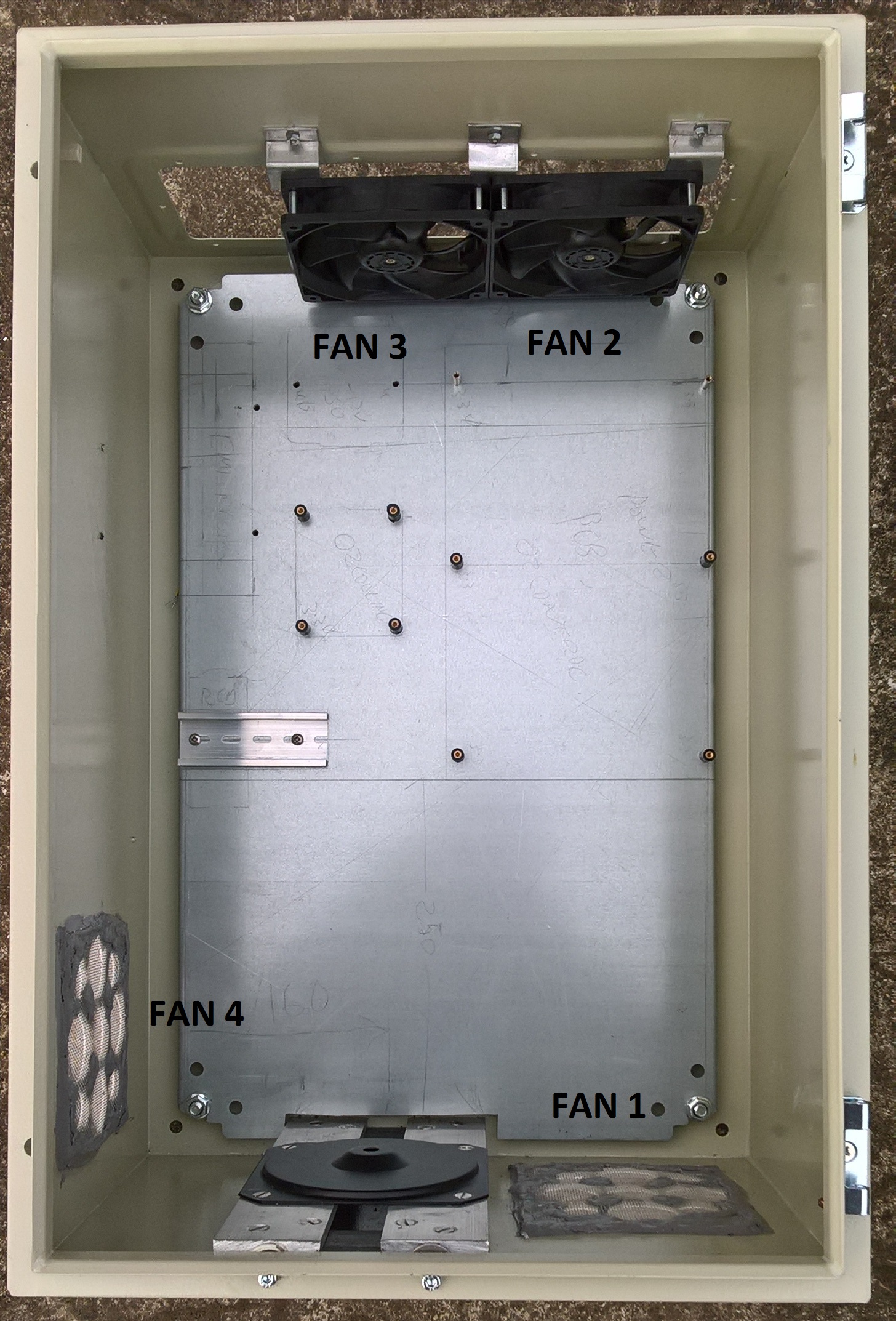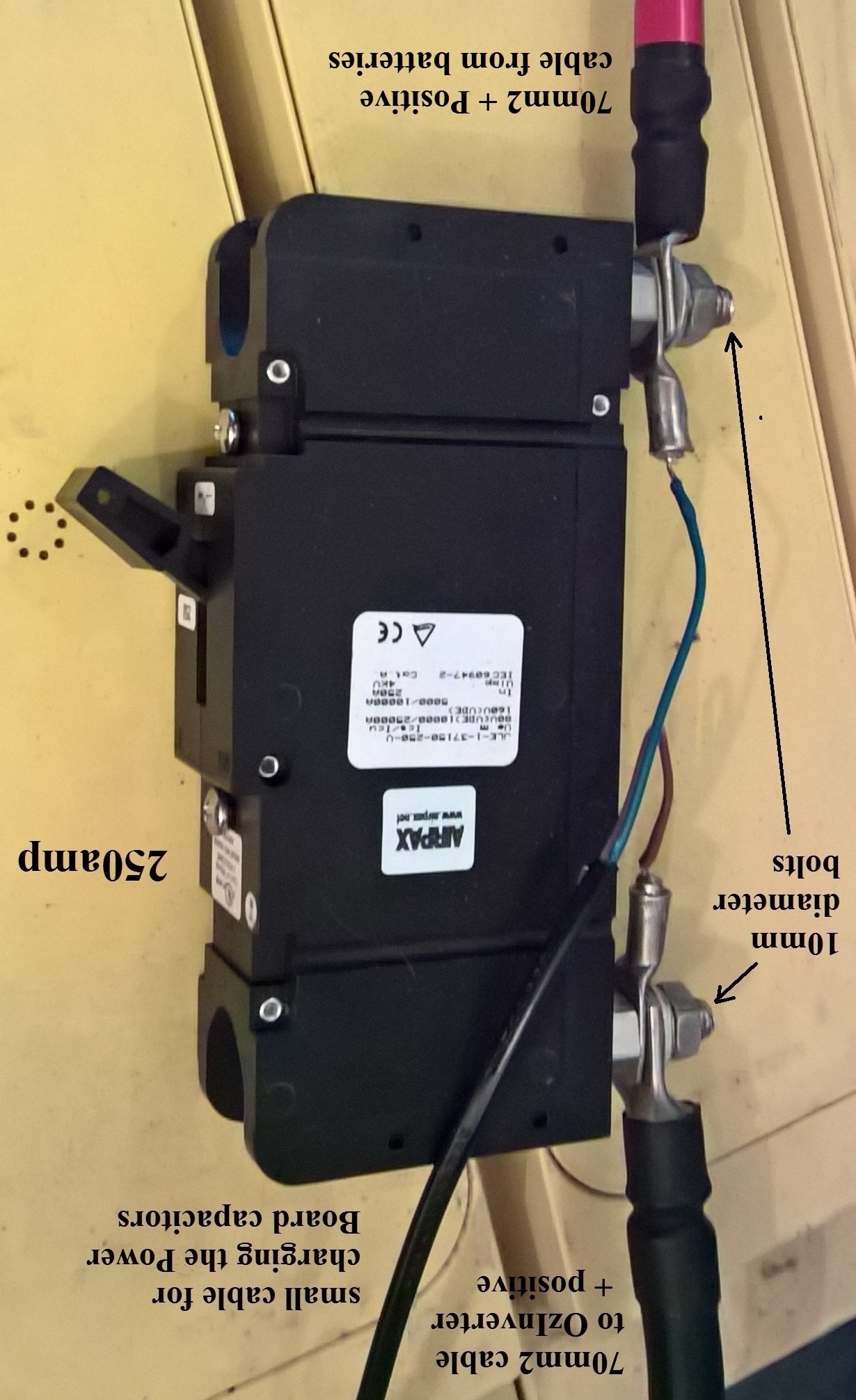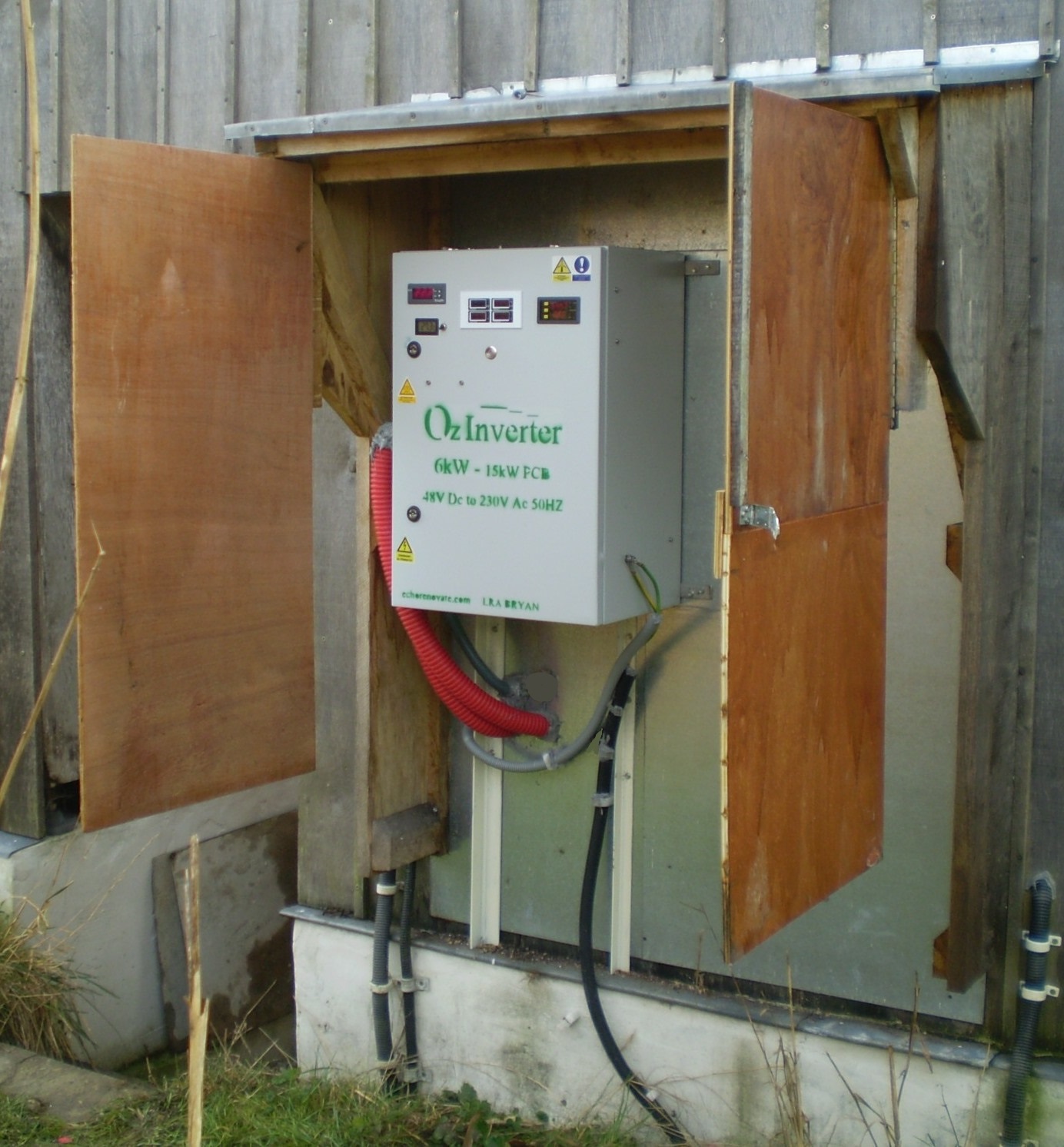I thought that some Forum members might like to read this. Something i did recently for some French folk, this is the English version. Sparweb, if you want the French version i can post as well?
It relates mostly to the 6kW-15kW, 50kW surges, OzInverter but it covers information about most Inverters Installs.
COOLING A MAIN POWER INVERTER . My personal experience and observations after 15 years of making, installs and running Inverters, and having that vital Empirical Evidence.
I have put this together for others, this all may seem ‘common sense’, to most of you, but to get that ‘common sense’ you need actual hands on experience information.
1. …….. Your main Inverter 48v DC to 230v AC 50HZ, (or 120vac 60HZ in the US), should be kept cool at all times.
2. …….. Firstly, DO NOT INSTALL the Inverter in the same room or compartment as the batteries.
3 ……. Your Inverter should have good access to air flow. But keep the weather elements away from the actual machine.
Excess heat in your inverter when under load, will lead to rapid wear down on the electronic components, notably the Capacitors and the toroid windings.
Ensure that the enclosure for the Inverter allows good air flow, for the PCB’s and the toroid. And for the 6kW OzInverter I recommend the double ozcooling circuit that’s temp and delay adjustable, for sucking in with a 120mm diameter fan at the bottom blowing air direct onto the toroid and another sucking the air out at the top of the enclosure. And 2 more 120 mm diameter fans with the PCB boards that are fastened vertically.
Use stainless steel insect mesh to stop spiders etc from getting into the Inverter machine. As Oztules found out, “The local moths liked my LED’s on the control board and snuggled up to it until the Control board shorted out.” Keep the insect mesh clear, its surprising that insects and debris soon clog the mesh.

Batteries, especially Lead Acid need to be in their own separate environment, with lots of air flow to disperse the Hydrogen that is given off. The Inverter and the Inverter main fuse should be in their own separate environment.
I have seen Blue gently glowing balls of methane and hydrogen slowly ascending from our open ended battery shed on a still foggy autumn evening, they dissipate at about 10 meters high after 10 to 15 seconds.
I have also seen that when a main 250amp breaker has been engaged in the battery room, for just a split second all the spider cobwebs glowed, so not a good idea to have electrical connections in the battery room.

For a permanent 24/7 inverter installation, a good solution is to have the Inverter the other side of the wall to the battery room, this keeps the 70mm/2 cable reasonably short, so voltage sag is minimal. And have the Inverter in a good weather/rain proof cabinet that keeps it dry and protected from beast and small animals, but importantly allows lots of air to flow around it.
Ensure your cables are encased in cable protection from the ‘furry critters’.

Now some of you may say, “I will have the inverter inside my house”, well firstly, the constant very gentle Hum from the hand made toroid and the Choke assembly are always there, and with commercial manufactured inverters under heavy load can sound like a bag of spanners.